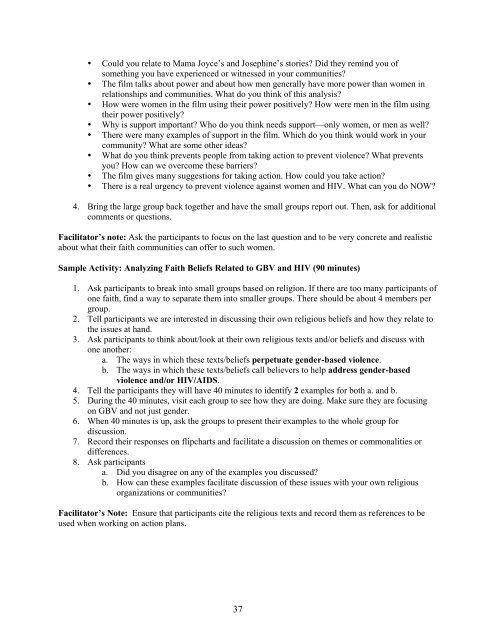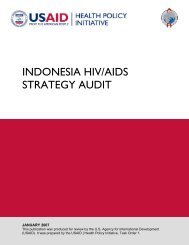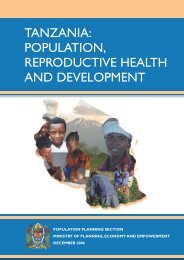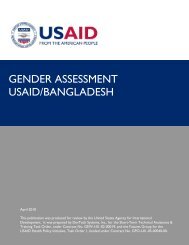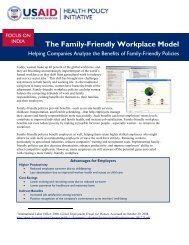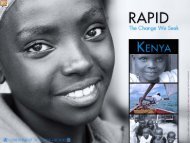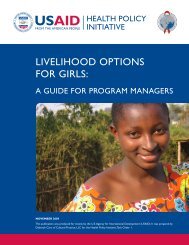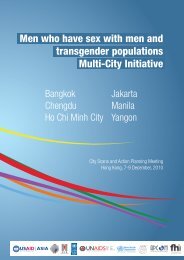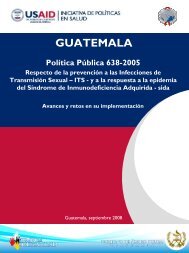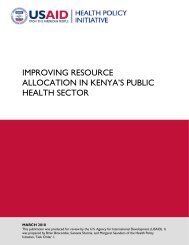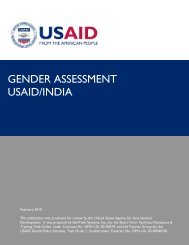A Call to Act - Health Policy Initiative
A Call to Act - Health Policy Initiative
A Call to Act - Health Policy Initiative
You also want an ePaper? Increase the reach of your titles
YUMPU automatically turns print PDFs into web optimized ePapers that Google loves.
• Could you relate <strong>to</strong> Mama Joyce’s and Josephine’s s<strong>to</strong>ries? Did they remind you of<br />
something you have experienced or witnessed in your communities?<br />
• The film talks about power and about how men generally have more power than women in<br />
relationships and communities. What do you think of this analysis?<br />
• How were women in the film using their power positively? How were men in the film using<br />
their power positively?<br />
• Why is support important? Who do you think needs support—only women, or men as well?<br />
• There were many examples of support in the film. Which do you think would work in your<br />
community? What are some other ideas?<br />
• What do you think prevents people from taking action <strong>to</strong> prevent violence? What prevents<br />
you? How can we overcome these barriers?<br />
• The film gives many suggestions for taking action. How could you take action?<br />
• There is a real urgency <strong>to</strong> prevent violence against women and HIV. What can you do NOW?<br />
4. Bring the large group back <strong>to</strong>gether and have the small groups report out. Then, ask for additional<br />
comments or questions.<br />
Facilita<strong>to</strong>r’s note: Ask the participants <strong>to</strong> focus on the last question and <strong>to</strong> be very concrete and realistic<br />
about what their faith communities can offer <strong>to</strong> such women.<br />
Sample <strong>Act</strong>ivity: Analyzing Faith Beliefs Related <strong>to</strong> GBV and HIV (90 minutes)<br />
1. Ask participants <strong>to</strong> break in<strong>to</strong> small groups based on religion. If there are <strong>to</strong>o many participants of<br />
one faith, find a way <strong>to</strong> separate them in<strong>to</strong> smaller groups. There should be about 4 members per<br />
group.<br />
2. Tell participants we are interested in discussing their own religious beliefs and how they relate <strong>to</strong><br />
the issues at hand.<br />
3. Ask participants <strong>to</strong> think about/look at their own religious texts and/or beliefs and discuss with<br />
one another:<br />
a. The ways in which these texts/beliefs perpetuate gender-based violence.<br />
b. The ways in which these texts/beliefs call believers <strong>to</strong> help address gender-based<br />
violence and/or HIV/AIDS.<br />
4. Tell the participants they will have 40 minutes <strong>to</strong> identify 2 examples for both a. and b.<br />
5. During the 40 minutes, visit each group <strong>to</strong> see how they are doing. Make sure they are focusing<br />
on GBV and not just gender.<br />
6. When 40 minutes is up, ask the groups <strong>to</strong> present their examples <strong>to</strong> the whole group for<br />
discussion.<br />
7. Record their responses on flipcharts and facilitate a discussion on themes or commonalities or<br />
differences.<br />
8. Ask participants<br />
a. Did you disagree on any of the examples you discussed?<br />
b. How can these examples facilitate discussion of these issues with your own religious<br />
organizations or communities?<br />
Facilita<strong>to</strong>r’s Note: Ensure that participants cite the religious texts and record them as references <strong>to</strong> be<br />
used when working on action plans.<br />
37


